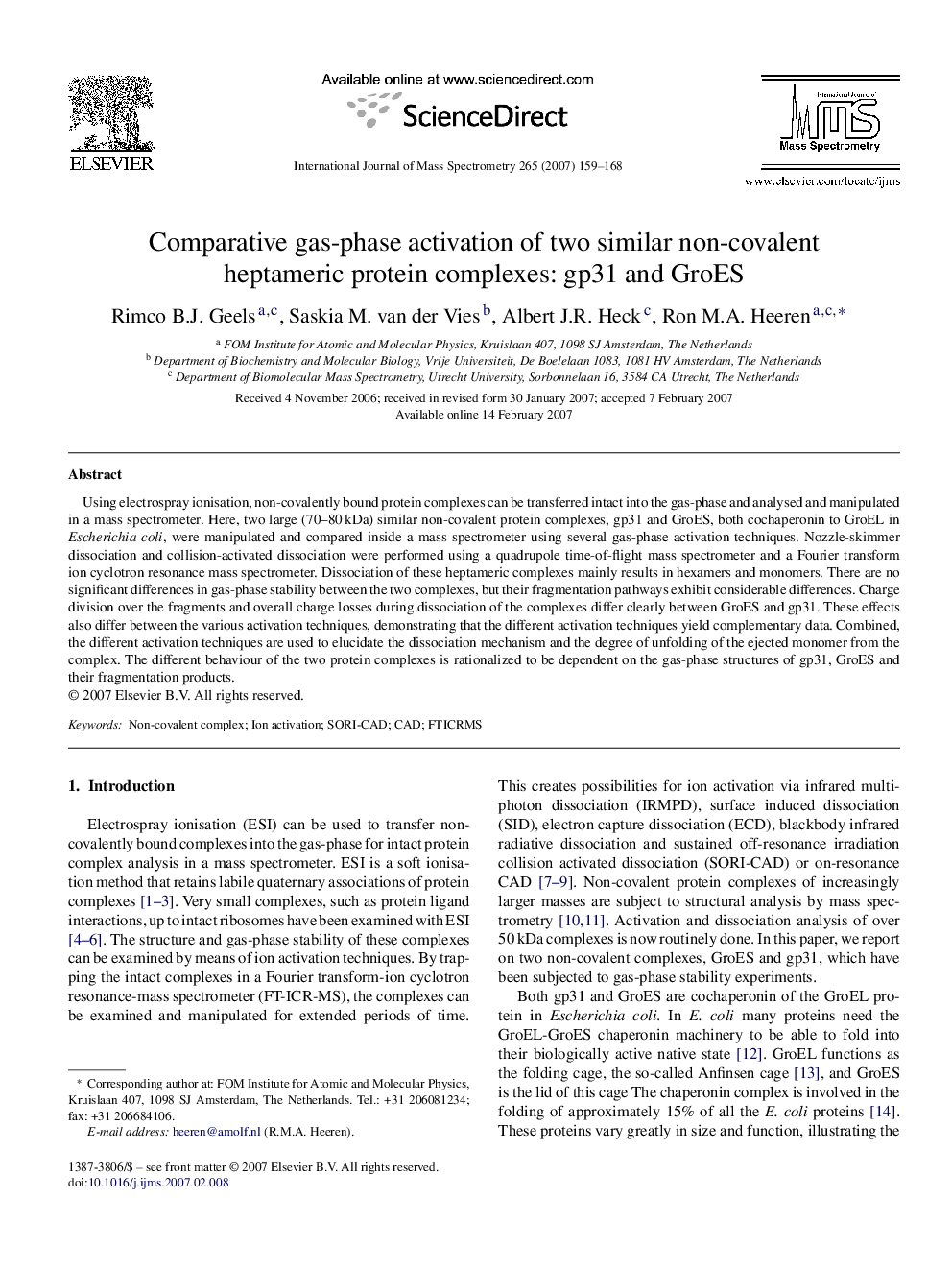| Article ID | Journal | Published Year | Pages | File Type |
|---|---|---|---|---|
| 1194108 | International Journal of Mass Spectrometry | 2007 | 10 Pages |
Using electrospray ionisation, non-covalently bound protein complexes can be transferred intact into the gas-phase and analysed and manipulated in a mass spectrometer. Here, two large (70–80 kDa) similar non-covalent protein complexes, gp31 and GroES, both cochaperonin to GroEL in Escherichia coli, were manipulated and compared inside a mass spectrometer using several gas-phase activation techniques. Nozzle-skimmer dissociation and collision-activated dissociation were performed using a quadrupole time-of-flight mass spectrometer and a Fourier transform ion cyclotron resonance mass spectrometer. Dissociation of these heptameric complexes mainly results in hexamers and monomers. There are no significant differences in gas-phase stability between the two complexes, but their fragmentation pathways exhibit considerable differences. Charge division over the fragments and overall charge losses during dissociation of the complexes differ clearly between GroES and gp31. These effects also differ between the various activation techniques, demonstrating that the different activation techniques yield complementary data. Combined, the different activation techniques are used to elucidate the dissociation mechanism and the degree of unfolding of the ejected monomer from the complex. The different behaviour of the two protein complexes is rationalized to be dependent on the gas-phase structures of gp31, GroES and their fragmentation products.
